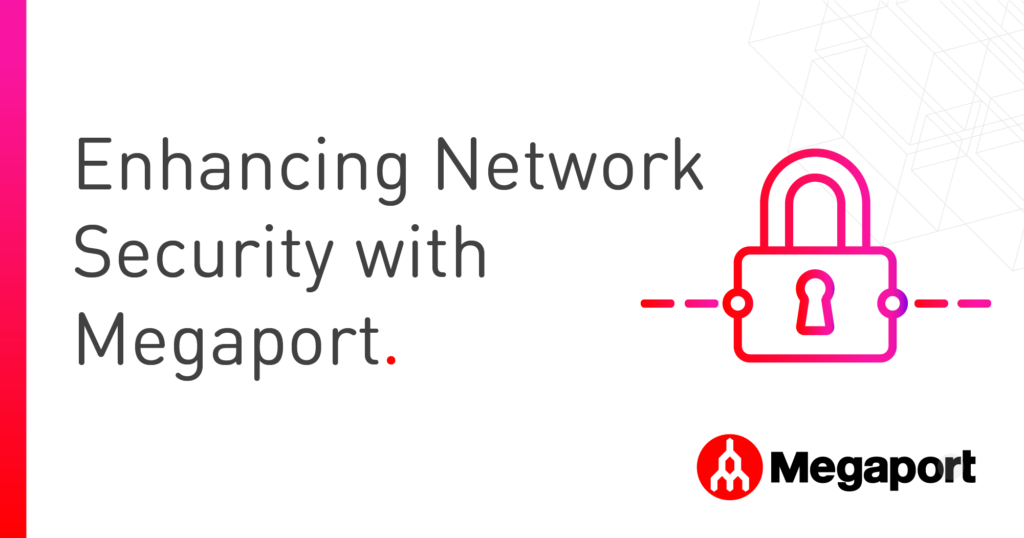
Executives, Here’s What Your Network Team Wants You to Know
By Mark Austen, Solutions Architect
Understanding and aligning to the needs of your network team can unlock a more profitable, efficient, and sustainable business.
Network and IT teams are part of the success of your organization. They keep your critical applications running smoothly and protect your data from threats, all while flying under the radar.
Your enterprise network has a significant influence on productivity, speed to market, customer satisfaction, and OpEx – and your network team has valuable insights into exactly how your network can contribute to your success (or failure). But these valuable insights often don’t reach the executive level, where strategic decisions are made.
Aligning network operations and strategic decisions can be a game-changer for productivity, customer satisfaction, and long-term growth. From our own team of Megaport networking experts, here’s a list of things we think executives should know about their network.
1. Network security isn’t a one-time fix.
Cybersecurity isn’t just a hot topic among networking architects – we know it’s on every executive team’s list of concerns, too. But network security isn’t something you can just set and forget.
Threats evolve constantly, and your enterprise network needs to evolve with them. These are just some of the things we do regularly to keep the organization secure:
- Conduct regular audits and risk assessments
- Regularly update and upgrade security platforms in response to evolving threats
- Use a private network underlay wherever possible
- Share up-to-date security guidelines and training with the team
- Utilize the security features available from cloud and managed service providers
- Use virtual firewalls with the flexibility to architect alongside a growing network.
To boost the impact of these activities, you can foster a cybersecurity culture across the business by:
- Asking us about what you want to better understand
- Being involved in major business impact analysis (BIA) and strategy meetings
- Encouraging employees to actively participate in training and maintain vigilance in cybersecurity best practices
- Soliciting feedback from the wider business on your security posture to encourage a security-first mindset.
2. Bandwidth doesn’t equal performance.

It’s easy to assume that in our world, more bandwidth equals better performance. But that’s like thinking a six-lane highway will automatically improve traffic without addressing clogged on-ramps or potholes in the road.
In reality, network performance also depends on factors like:
- Latency: The time it takes data to travel from the source to the destination when instructed.
- Jitter: A type of packet transit delay that can be caused by several effects on a network path. Higher levels of jitter are more likely to occur on slow or heavily congested links.
- Packet loss: When one or more transmitted data packets don’t arrive at the destination, usually caused by congested links, network device failure, or network reachability status changes.
- Hops: The total number of routers that a packet passes through to get from the source to the destination.
- Competing traffic: Using a public connectivity method introduces other network traffic which can hinder network performance, as opposed to a private method which provides consistent capacity.
- Network providers: Using a traditional provider with lock-in contracts and set bandwidth will provide inconsistent network performance, compared with an as-a-service provider that offers the ability to scale bandwidth on-demand.
This is why it’s not always as simple as adding more bandwidth if we experience performance issues. Instead, we’ll address these factors by using private, scalable solutions, like Network as a Service (NaaS).
3. We’re not entirely virtual – we rely on hardware too.
The term “cloud” can be misleading. Data is stored on-premises, and when it travels, it passes through on-premises midpoints to reach its destination. This means your business network heavily relies on data centers and other physical infrastructure for “mission-critical” Software as a Service (SaaS) functions like:
- Data transit between branches, regions, and applications
- Cloud storage applications, including data backup and recovery
- E-commerce applications, which support high-volume transactions
- Website hosting
- Email and other productivity applications
- AI, “big data”, and machine learning applications.
It’s important for us to invest in hybrid cloud solutions that can interconnect branch, data center, and cloud workloads for better network performance, keeping customers happy and teams productive. Having an interconnected network also makes it easier to incorporate new applications and functionalities across our network stack – particularly important for executive teams looking to incorporate AI and ML in the future.
4. Effective AI adoption needs our involvement.
Speaking of AI – if you’re planning one or more AI implementations across your business, it’s essential to involve your network team.
AI isn’t magic. It runs on computing infrastructure and relies on your network to integrate and function successfully with your existing internal and customer-facing applications.
To successfully integrate AI tools, your network team will look at things like:
- Infrastructure compatibility: Checking your current IT infrastructure is going to work with the proposed AI tools
- Network setup: Ensuring you have low-latency, resilient connectivity set up between these AI tools and their data sources
- Scalability: Architecting your AI integrations to handle short-term peaks in demand as well as growing demand over time
- Monitoring: Determining how to effectively monitor and manage the performance of these AI tools.
An efficient network is critical for successful AI integration, and your network team will even be able to recommend some useful tools of their own.
Discover Megaport AI Exchange
5. Vendor lock-in is a real problem – but it can be avoided.
In the networking world, one of our biggest fears is vendor lock-in: being so tied to one vendor that switching is nearly impossible without significant cost and disruption.
We’re in the era of multicloud for good reason. Different cloud providers offer different reach, features, benefits, and costs – this extends to data center operators and managed service providers, too.
Being able to use multiple vendors means:
- You increase the number and type of applications available for your organization to use.
- You can expand your business easily, using the best available options for each region and the best features of each platform.
- You can mix and match your favorite features from each cloud platform to multiply possible use cases across your business (including private cloud-to-cloud).
Architecting your network with multiple providers may seem inefficient at first glance, but it’s quite the opposite. In the hands of a capable network team, multi-vendor setups offer the opportunity to improve your company’s bottom line and get more value from your network investment.
6. Network efficiency is critical to business sustainability.
In 2024, every executive team is talking about business sustainability, and for good reason. It’s more than just a feather in the cap – customers, investors, and partners are making revenue-altering decisions based on whether a company demonstrates commitment to environmental responsibility.
What some executive teams may not realize is that placing some investment toward a more sustainable network will have a major impact on your bottom line and Environmental, Social, and Governance (ESG) goals. Plus, it’s also a win for improving efficiency and reducing long-term costs.
Here are just some of the ways your network team can improve business sustainability:
- Virtualize what they can, reducing the use of proprietary physical hardware (bonus points for recycling hardware waste)
- Pivot toward providers with eco-conscious business setups and policies.
- Incorporate automation in ways that monitor and reduce energy usage across the network stack
- Audit and remove “dark data”—data that goes unused and unaccessed—from consuming extra resources.
As a result, you’ll be able to:
- Reduce carbon footprint by reducing network energy consumption
- Match resources with real infrastructure needs and projections to avoid overprovisioning
- Reduce short-term costs, freeing up budget to invest in long-term sustainability initiatives
- Align your energy usage with international environmental regulations to achieve compliance, expanding business opportunities and enhancing your CSR profile
- Attract new customers and investors in an increasingly eco-conscious global market
- Streamline network operations for improved performance and cost efficiency.
If executives and network teams can bridge the gap between technical operations and executive decision-making, they can unlock a more profitable, efficient, and sustainable business.
By staying engaged with your network team and understanding the nuances of effective network management, you can better align the company’s overarching goals to tangible, data-driven objectives – and ensure your network infrastructure supports your company’s long-term growth.


